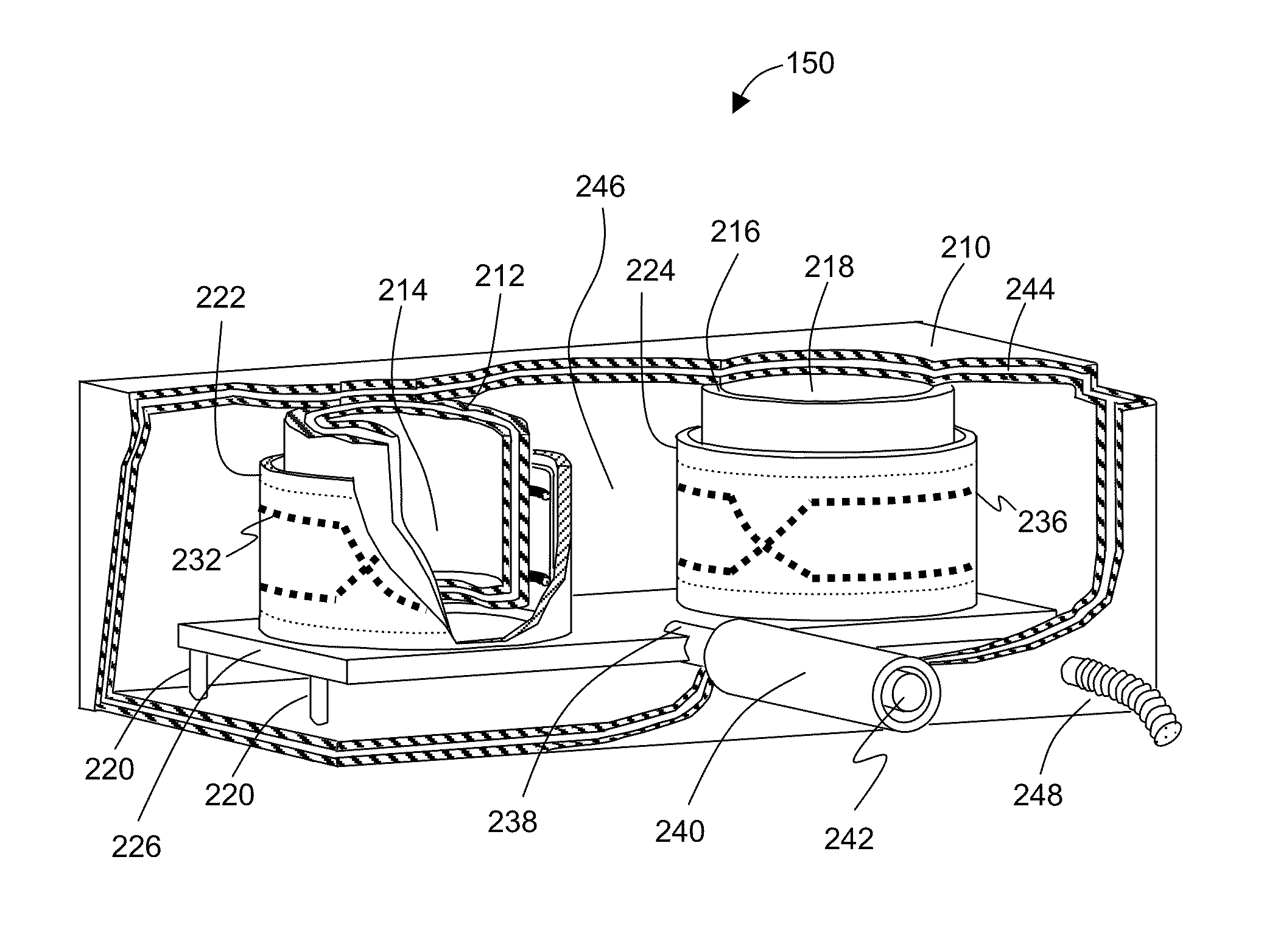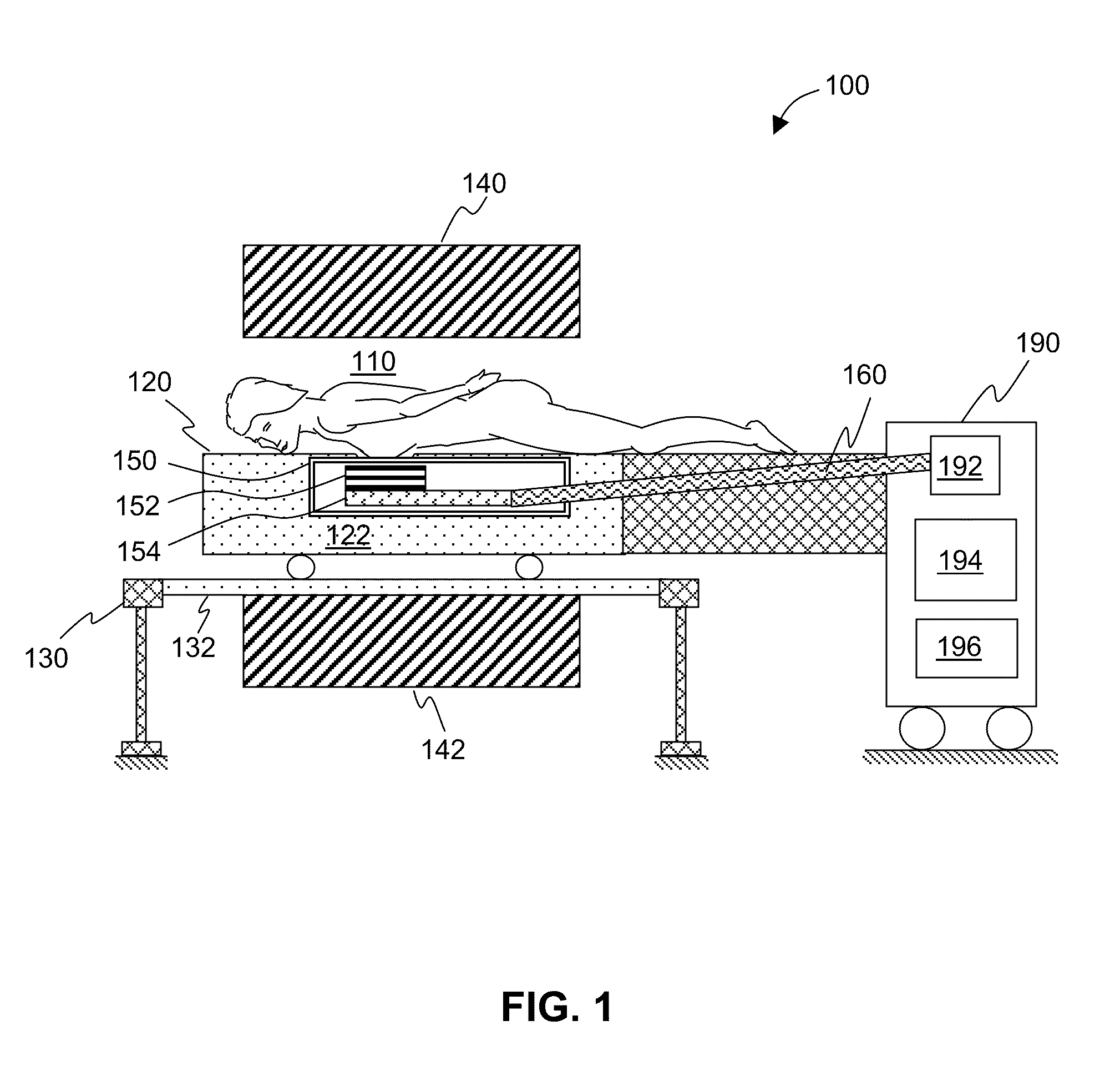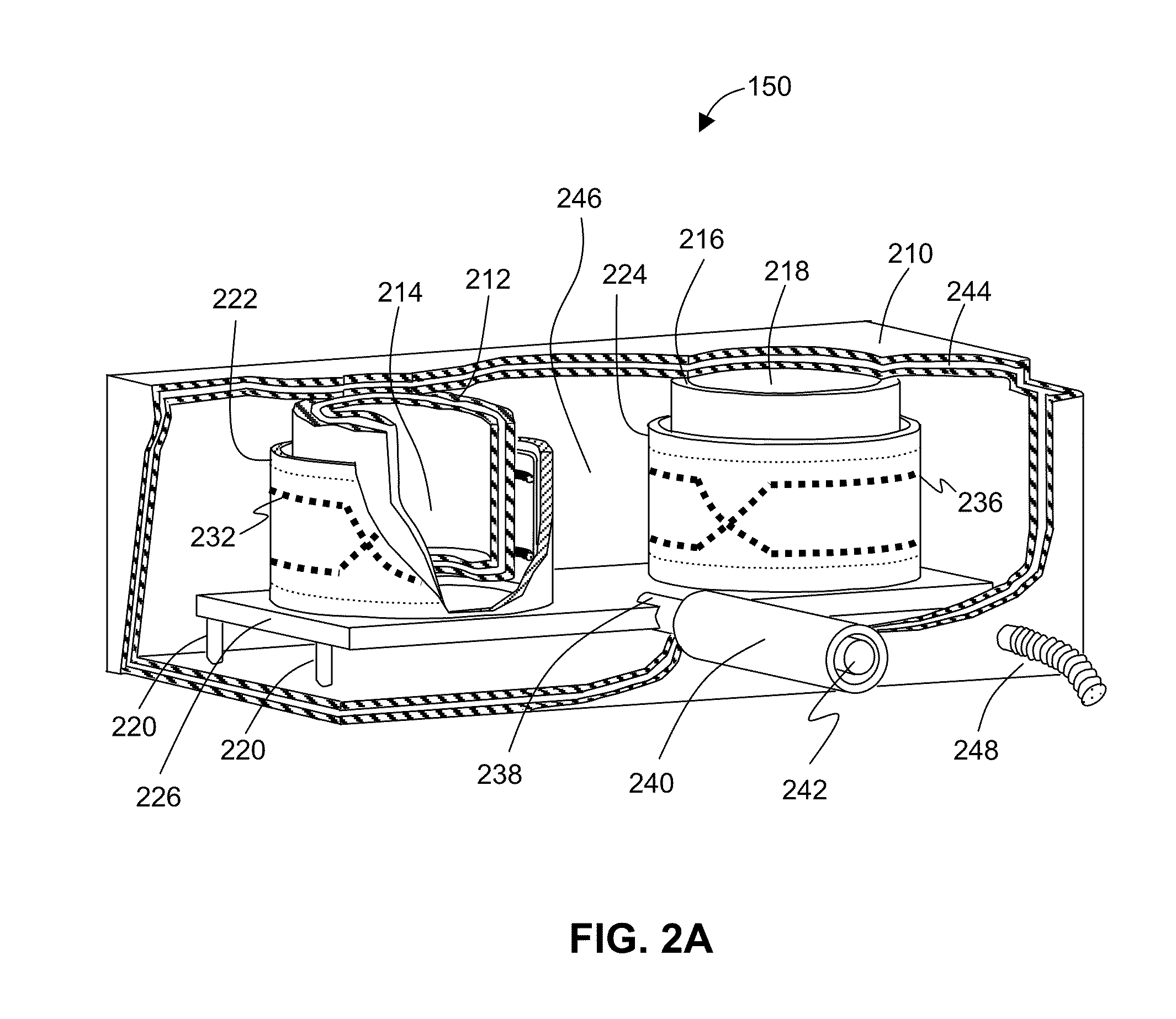Dedicated superconductor MRI imaging system
a imaging system technology, applied in the field of dedicated superconductor magnetic resonance imaging (mri) equipment, can solve the problems of large fov, high sample noise, and conflicting ideal transmission coils with those of the receiver coils, and achieve the effect of improving imaging quality
- Summary
- Abstract
- Description
- Claims
- Application Information
AI Technical Summary
Benefits of technology
Problems solved by technology
Method used
Image
Examples
Embodiment Construction
[0024]In view of the forgoing problems with conventional MRI RF systems, new designs of dedicated MRI apparatuses are needed. A dedicated MRI system requires a local examination region. According to Equation 2, when the examination volume is reduced, the noise level will be reduced. Small surface coils can achieve a higher SNR because they receive noise from a small sample volume. The disadvantage of small surface coils, however, is a limited FOV and an inhomogeneous spatial uniformity as a transmitter. Larger coils with inherently larger FOVs have the advantage of improved uniformity. It is therefore advantageous to have a two-coil system. A larger coil will be used to transmit while the superconductor coil is used as the receive coil.
[0025]Phased array surface coils have been developed to overcome the problem of decreased FOV. Phased array surface coil consists of multiple non-interacting coils, which provides a similar SNR as a small coil and an FOV associated with a larger coil ...
PUM
 Login to View More
Login to View More Abstract
Description
Claims
Application Information
 Login to View More
Login to View More - R&D
- Intellectual Property
- Life Sciences
- Materials
- Tech Scout
- Unparalleled Data Quality
- Higher Quality Content
- 60% Fewer Hallucinations
Browse by: Latest US Patents, China's latest patents, Technical Efficacy Thesaurus, Application Domain, Technology Topic, Popular Technical Reports.
© 2025 PatSnap. All rights reserved.Legal|Privacy policy|Modern Slavery Act Transparency Statement|Sitemap|About US| Contact US: help@patsnap.com



